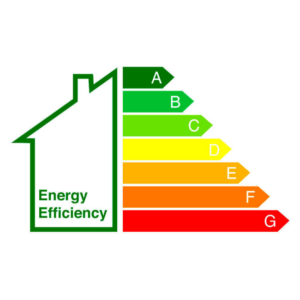
The government has recently announced changes to energy efficiency regulations. Energy Performance Certificates (EPCs) have been eliminated for residential rentals but remain mandatory for commercial leases, with new requirements set for 2028 and 2030. Although these dates might seem far off, upgrading your building’s energy efficiency now can help you avoid non-compliance penalties, support environmental sustainability, and attract eco-conscious tenants.
What Are Energy Performance Certificates?
Energy Performance Certificates (EPCs) are ratings that evaluate a building’s energy efficiency. A qualified energy assessor uses a Standard Assessment Procedure (SAP) to calculate a score, usually between 1 and 100, based on factors like construction methods, insulation, glazing, and energy use for heating and lighting. A score of 100 indicates that a building generates all the energy it consumes, such as through rooftop solar panels. This SAP score is then converted into an EPC rating, where a score of 81 to 91 corresponds to a B rating.
Starting in 2023, all leased commercial properties must have an EPC rating of E or higher. The requirement to upgrade to a C rating has been postponed to April 2028, but the mandate to achieve a B rating by 2030 remains unchanged. Analysts predict that waiting for further delays or relaxations of these regulations is unlikely to be successful. With an election approaching, Labour figures, including shadow Net Zero Secretary Ed Miliband, have voiced strong opposition to any relaxation of these standards.
Why Should You Care About Your EPC Rating?
Penalties for leasing a non-compliant commercial building can range from £10,000 to £150,000 per breach, depending on the property’s rateable value. However, energy efficiency is important beyond legal compliance. Rightmove’s energy bill tracker shows that for most residential properties, improving an EPC rating from C to B can reduce energy bills by one-third.
Commercial properties vary significantly, so useful statistics often come from the residential sector. For example, the Mortgage Advice Bureau reports that improving your EPC rating by two bands can increase property value by about 9%.
How Can I Improve My EPC Rating?
Commercial property owners might have already taken basic steps such as switching to LED lighting and insulating hot water tanks. Replacing old, inefficient boilers and using heating controls to set room-specific temperatures are also beneficial. Since temperature control accounts for most energy use, further improvements should focus on enhancing the building envelope to reduce heat loss (or gain in hot weather). Effective measures include:
- Upgrading window glazing
- Installing insulation, such as external wall insulation (EWI)
- Adding an insulated façade, like a rainscreen cladding system
The Benefits of External Wall Insulation
External Wall Insulation (EWI) is a protective, decorative layer attached to the outside of a building. It significantly improves thermal performance, reducing energy costs, and enhances thermal comfort by minimizing noise and preventing condensation and dampness. Properly specified and installed, EWI can extend the building’s lifespan by up to 30 years with minimal maintenance. Additionally, a new exterior can refresh the building’s appearance, with EWI available in various finishes including paint, tiles, panels, or custom textures.
A government survey found that property prices increase by an average of 3% following an EWI retrofit, providing immediate financial benefits in addition to long-term energy savings.
The Benefits of Rainscreen Cladding
Rainscreen cladding is installed onto a building’s inner structural wall but is separated by an air cavity. Insulation is typically placed within this cavity, though other options exist. This system offers benefits similar to EWI, with the added advantage of a double-wall construction that enhances thermal efficiency. The air barrier helps regulate temperature, reducing heat conduction. In summer, hot air exits the cavity, being replaced by cooler air, while in winter, the trapped air keeps the building warm. Moisture dries quickly within the air pocket, keeping the inner wall dry.
Rainscreen cladding not only improves thermal efficiency, potentially reducing energy bills by 30 to 40%, but also enhances the building’s external aesthetics, providing an easy-to-maintain solution.
Choose a Trusted Façade Partner
Both EWI and rainscreen cladding are lightweight systems that skilled professionals can install quickly and easily. However, proper installation is crucial for performance and longevity. Ensure you choose a reputable contractor with references from similar successful projects.
